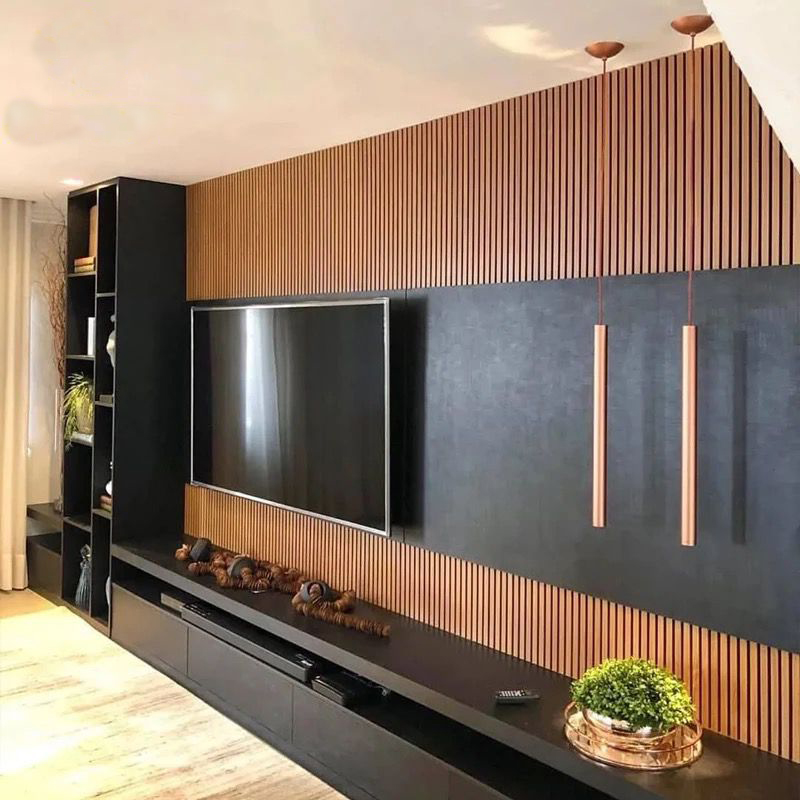When it comes to managing sound in your space, many people get confused about the difference between acoustic panels and soundproofing. While these terms are often used interchangeably, they serve very different purposes. Understanding their differences can help you make informed decisions for your home, office, or studio.
In this guide, we’ll explore the key differences between acoustic panels vs soundproofing, their specific purposes, and the best applications for each. Let’s dive in!
What Are Acoustic Panels?
Acoustic panels are materials designed to control sound within a room. They don’t block noise from coming in or going out but instead absorb sound waves to reduce echo and improve the quality of sound inside the space.
Key Features of Acoustic Panels:
- Made from sound-absorbing materials like foam, fabric, or wood.
- Installed on walls or ceilings to improve room acoustics.
- Focused on reducing echo, reverb, and sound clarity.
Benefits of Acoustic Panels:
- Ideal for spaces like recording studios, offices, or home theaters.
- Enhance the sound quality for music, movies, or conversations.
- Easy to install and often customizable to match interior designs.
Visual Tip: Imagine a music studio. Without acoustic panels, sound bounces off the walls, creating unpleasant echoes. With panels, the sound becomes clean and clear.
What Is Soundproofing?
Soundproofing, on the other hand, is all about preventing sound from traveling between spaces. It blocks noise from entering or leaving a room by adding barriers or insulation to walls, floors, or ceilings.
Key Features of Soundproofing:
- Focused on noise isolation.
- Uses heavy, dense materials like mass-loaded vinyl, drywall, or insulation.
- Often requires construction work for installation.
Benefits of Soundproofing:
- Stops outside noise from disturbing you (e.g., traffic or loud neighbors).
- Prevents noise leakage, making it perfect for apartments or offices.
- Improves privacy and creates a quieter environment.
Visual Tip: Think of soundproofing like creating a sound barrier. It’s like putting thick walls around your space to keep noises out or in.
Acoustic Panels vs Soundproofing: Key Differences
Understanding the differences between acoustic panels vs soundproofing is crucial when deciding what you need. Here’s a breakdown of the main distinctions:
| Aspect | Acoustic Panels | Soundproofing |
|---|---|---|
| Purpose | Improves sound clarity within a room | Blocks sound from traveling between spaces |
| Materials Used | Foam, wood, or fabric | Heavy barriers like vinyl or insulation |
| Installation | Simple and surface-mounted | Often requires construction work |
| Cost | Generally affordable and DIY-friendly | Can be expensive due to material and labor |
| Best For | Reducing echo and improving room acoustics | Preventing noise leakage for privacy |
Quick Summary:
- Use acoustic panels to enhance the sound within a room.
- Opt for soundproofing to stop sound from entering or leaving a space.
When to Use Acoustic Panels vs Soundproofing
Choosing between acoustic panels and soundproofing depends on your specific needs. Here are a few scenarios to help you decide:
Use Acoustic Panels If:
- You’re setting up a home theater and want better sound quality.
- Your office suffers from too much echo during meetings.
- You’re a musician or podcaster looking for clear recordings.
Use Soundproofing If:
- You live near a busy road and want to block outside noise.
- Your apartment walls are thin, and you hear your neighbors too often.
- You want to keep your music studio private without disturbing others.
How to Install Acoustic Panels
Installing acoustic panels is simple and can often be done as a DIY project. Follow these steps:
- Identify Problem Areas: Find spots where sound bounces the most, such as walls opposite each other.
- Choose the Right Panels: Pick acoustic panels that match your aesthetic and sound needs.
- Mount the Panels: Use adhesive strips, hooks, or screws to attach the panels to your walls or ceiling.
- Test the Sound: Play music or speak aloud to notice the difference.
Pro Tip:
For maximum efficiency, place panels at ear level and cover at least 25% of the wall surface.
Common Myths About Acoustic Panels and Soundproofing
Let’s debunk a few misconceptions:
- Myth 1: Acoustic panels block outside noise.
Fact: They only reduce echo within a room. - Myth 2: Soundproofing eliminates all sound.
Fact: No method can completely eliminate sound, but soundproofing greatly reduces it. - Myth 3: Both are expensive.
Fact: While soundproofing can be costly, acoustic panels are affordable and often DIY-friendly.
Why Choose Acoustic Wood Panels?
Acoustic wood panels, are a perfect blend of functionality and design. These panels are made from high-quality materials that not only improve acoustics but also elevate the aesthetics of your space.
Benefits of Acoustic Wood Panels:
- Stylish and customizable.
- Made from sustainable materials.
- Easy to install with excellent sound absorption properties.
Example Use: A sleek acoustic wood panel in your living room can enhance movie nights while adding a modern touch to your décor.
FAQs
1. Can acoustic panels completely soundproof a room?
No, acoustic panels are designed to reduce echo and improve sound clarity, not block outside noise.
2. What materials are best for soundproofing?
Mass-loaded vinyl, dense insulation, and multiple layers of drywall are excellent for soundproofing.
3. Are acoustic panels easy to install?
Yes, most panels come with adhesive strips or hooks for quick and easy installation.
4. Do acoustic wood panels work better than foam panels?
Acoustic wood panels offer a stylish and durable option, while foam panels are lightweight and budget-friendly. The choice depends on your needs.
5. Can I combine acoustic panels and soundproofing?
Absolutely! Using both methods together can enhance sound control and privacy in your space.
In conclusion, understanding the differences between acoustic panels vs soundproofing helps you choose the right solution for your needs. Whether you want to enjoy clear sound in your home theater or block noise from a busy street, knowing what each option offers ensures a quieter, more enjoyable environment.








